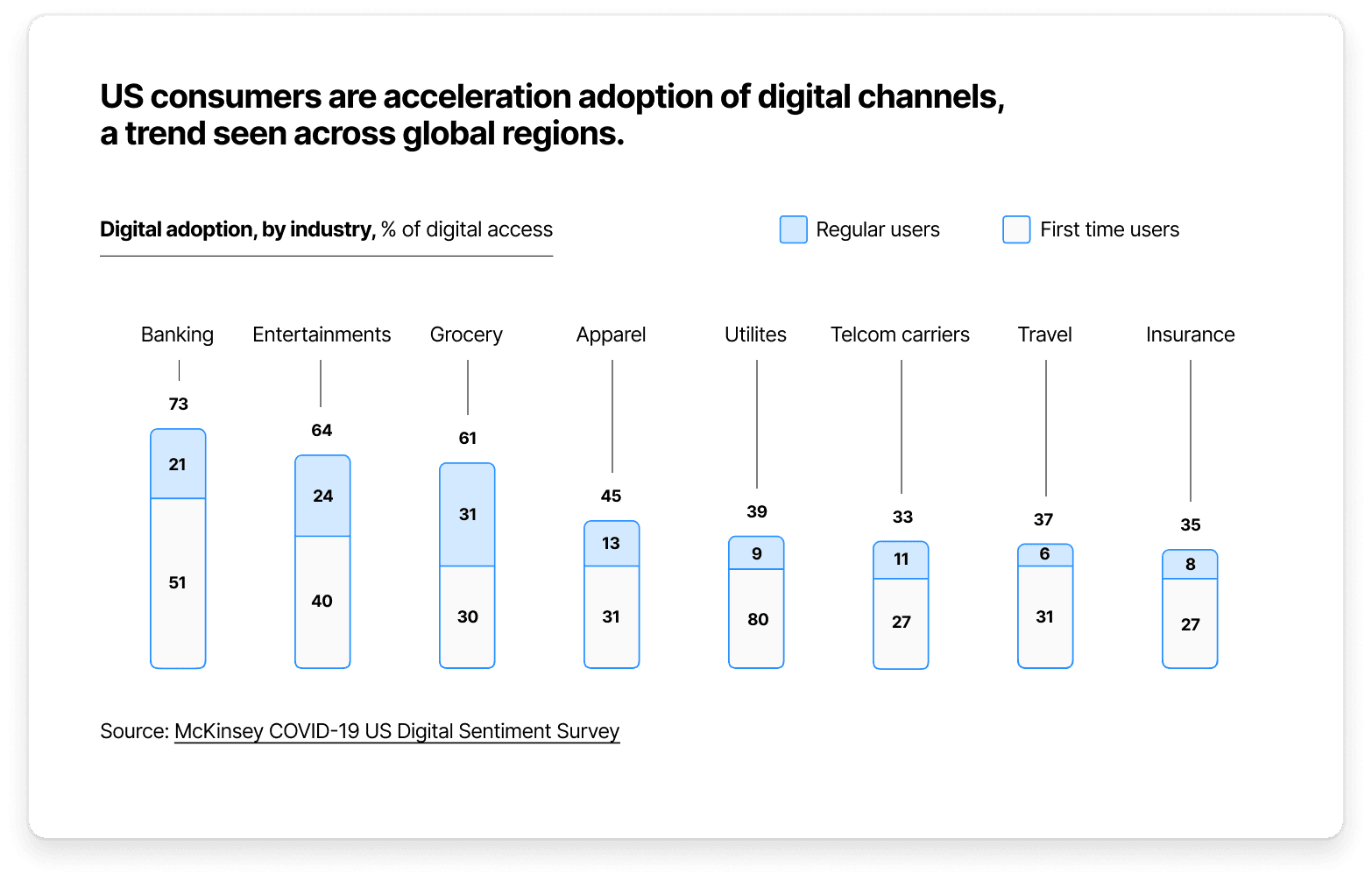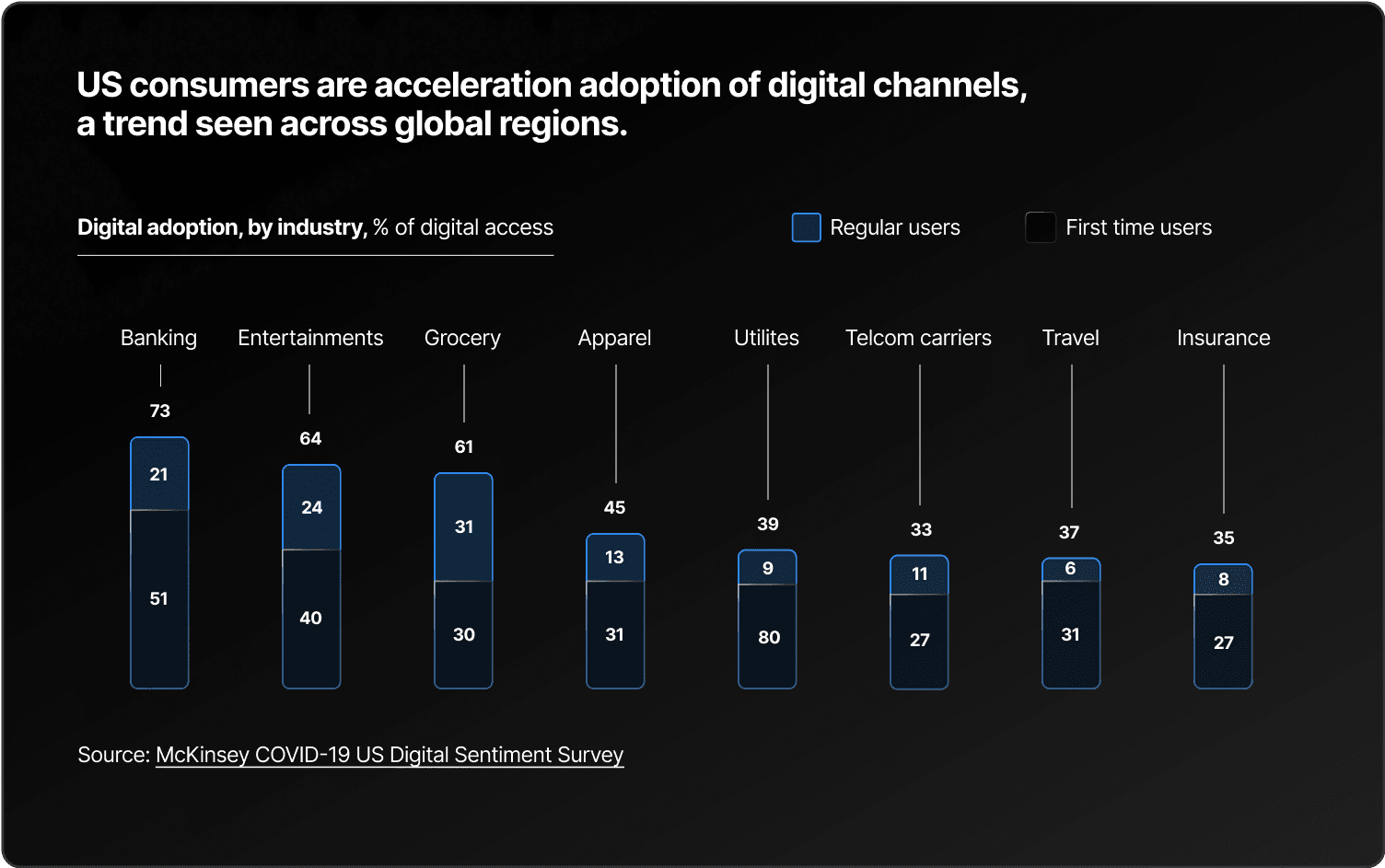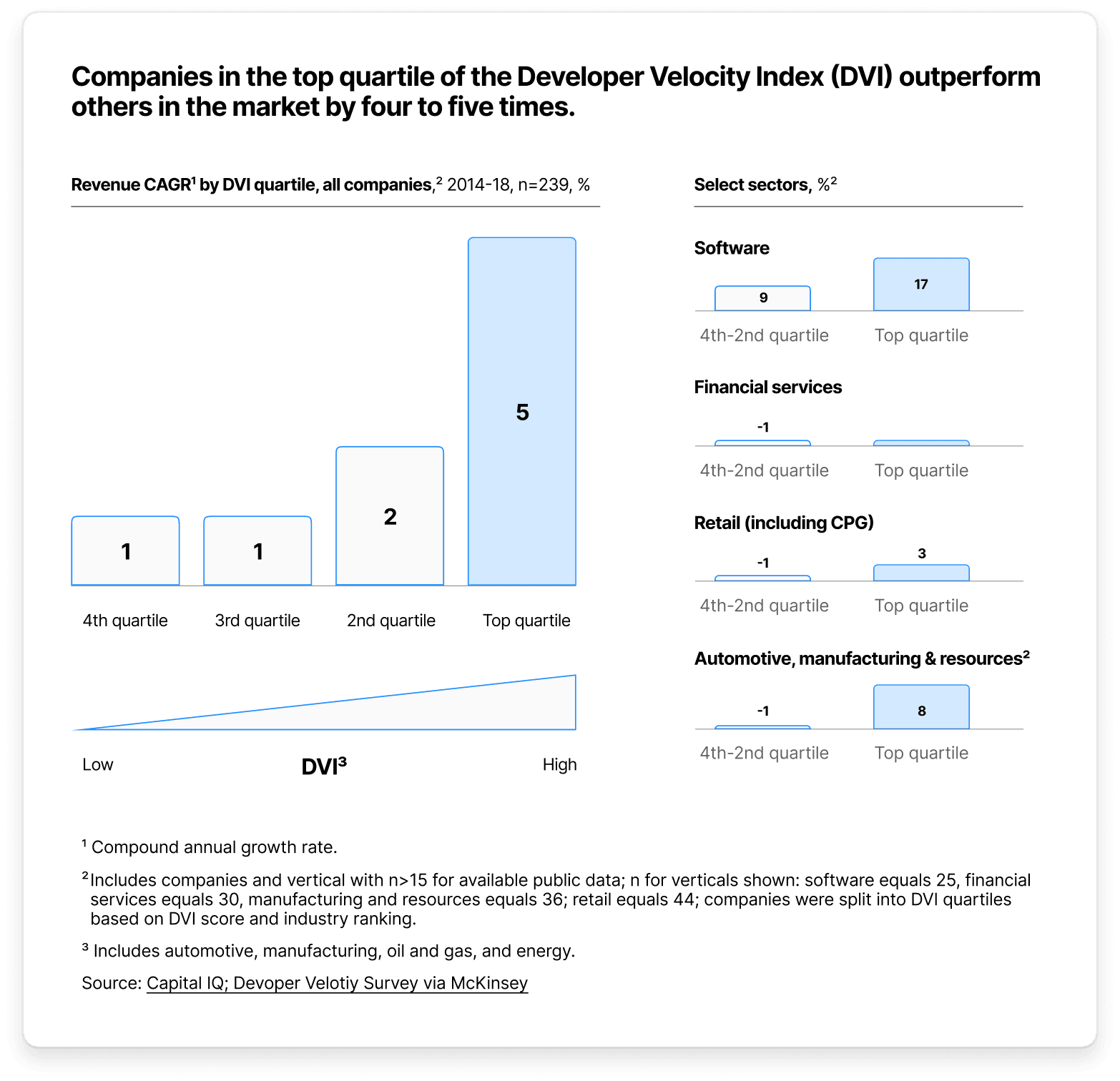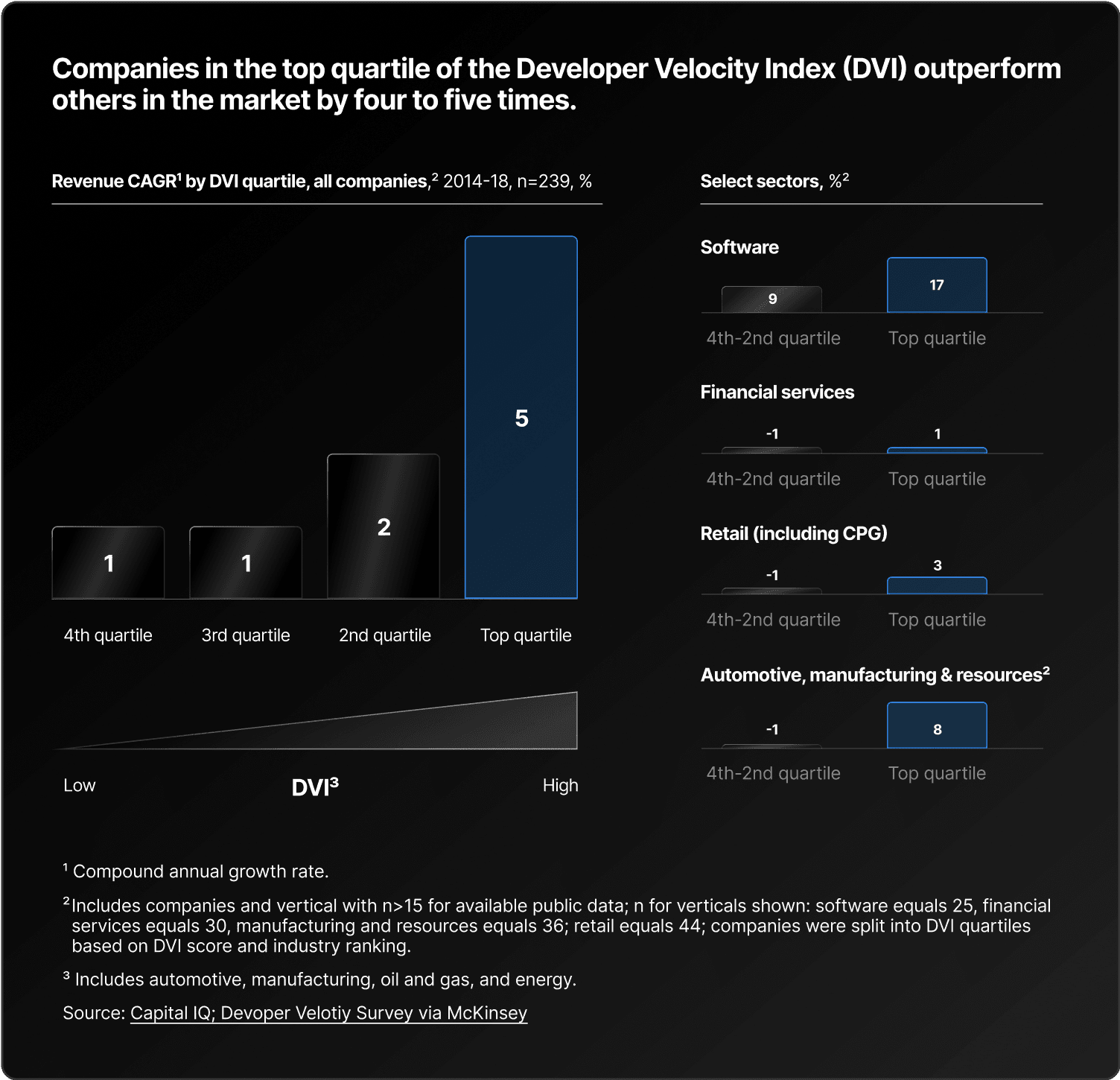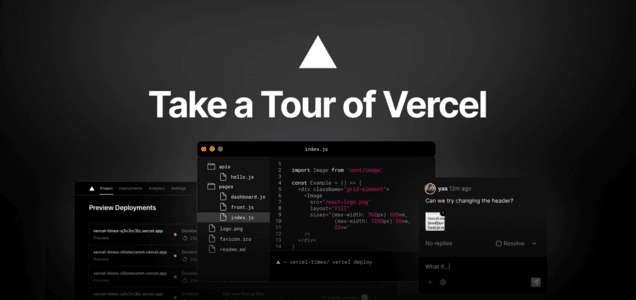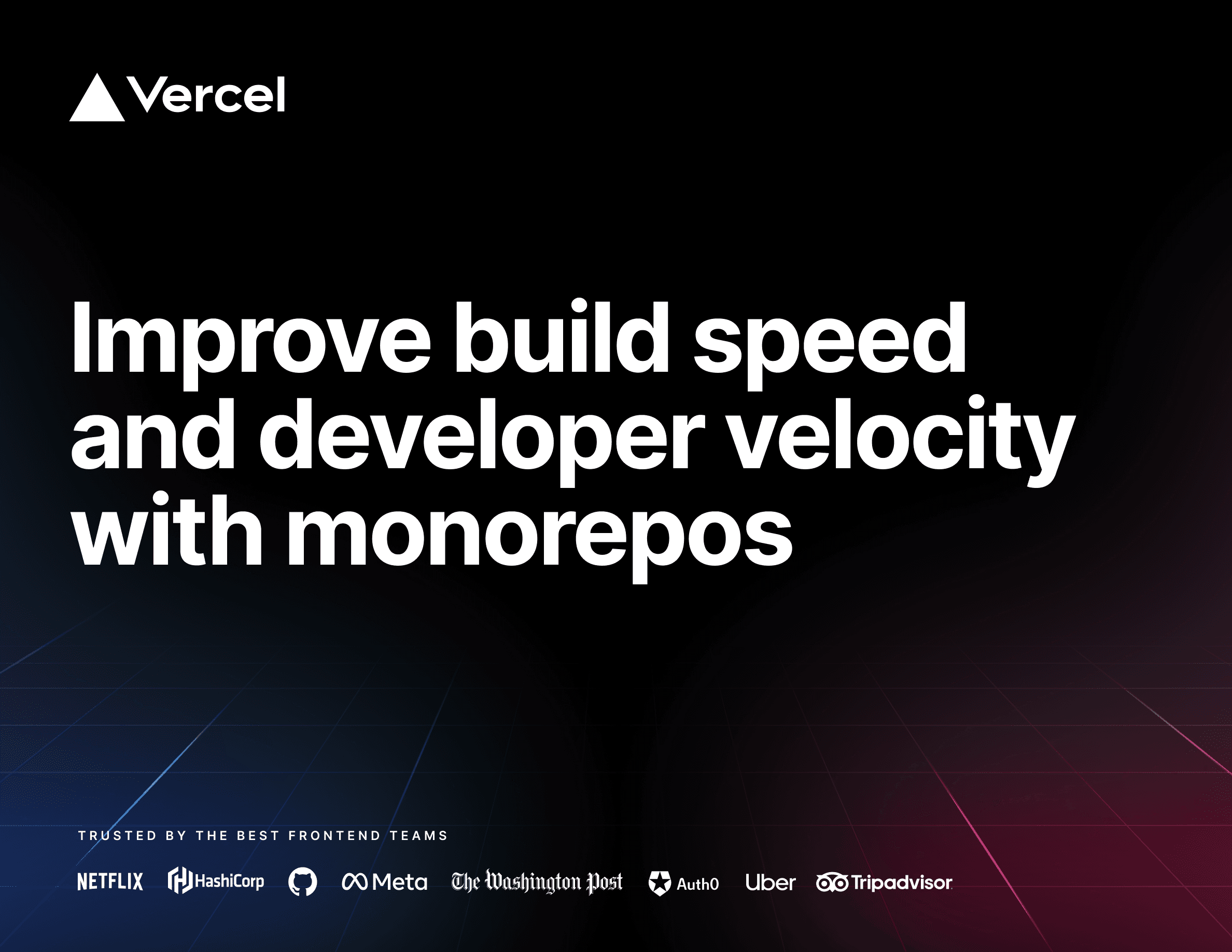May. 4th, 2023
The frontend cloud advantage
Redefining web development for the modern enterprise
Introduction
In today's highly competitive online marketplace, frontend developers on enterprise teams face numerous challenges in creating applications that are visually compelling, user-friendly, and fast. They must navigate a complex landscape of rapidly evolving technologies, frameworks, and best practices. Additionally, they must address the growing expectations of users who demand seamless and personalized web experiences, while ensuring that their applications adhere to stringent security and compliance standards.
Enter the frontend cloud: a specialized ecosystem designed to alleviate these pain points and empower frontend developers to build, test, and deploy top-quality web applications with greater ease and efficiency. By offering an integrated suite of tools and services tailored to the unique needs of frontend development, the frontend cloud provides developers with a robust and agile environment to address daily challenges and empower teams to achieve more.
This whitepaper will examine the features, advantages, and tangible outcomes that come with adopting a frontend cloud and how it can revolutionize the way organizations approach web development.
What is a frontend cloud?
A frontend cloud is a suite of cloud-native tools—like global infrastructure and caching, observability, and workflow tooling—designed to help companies and developers deliver the best web experience for their users.
The frontend cloud enables teams to focus time, resources, and innovation on the frontend—the heart of your users’ experience—instead of stitching together the many facets of backend tooling.
This results in optimal experiences for developers and users alike, leading to positive business impact and competitive advantage.
Let’s explore the traits of a frontend cloud and see how this innovative web development approach came to be.
Key components of a frontend cloud
A frontend cloud is characterized by its focus on cloud-native technologies and a customized set of tools and services that cater specifically to frontend developers on enterprise teams.
Some of the key components of a frontend cloud include:
Global infrastructure and caching
A frontend cloud leverages a globally distributed infrastructure, ensuring low latency and high availability for web applications. This is achieved through advanced caching mechanisms, which serve content to users from the nearest edge location, optimizing site performance and speed.
Developer tooling and workflow
Frontend clouds offer integrated developer tooling with built-in support for popular frontend frameworks and libraries. This allows developers to seamlessly build, test, and deploy applications using a unified workflow that fosters collaboration and reduces time to market.
Observability and monitoring
Comprehensive observability features are a core aspect of a frontend cloud, enabling developers to track application performance, identify bottlenecks, and quickly resolve issues.
This is often achieved through real-time monitoring and logging, as well as advanced analytics tools that provide insights into user behavior and application performance.
The rise of the frontend cloud
The advent of the frontend cloud is closely tied to the growing importance of frontend development in shaping business-to-consumer interactions. As users' expectations for fast, responsive, and engaging web experiences rise, organizations prioritize innovative development solutions. In this context, the frontend cloud has emerged as a game-changing approach, offering a streamlined, specialized environment tailored specifically to the needs of frontend developers.
Additionally, the industry has experienced a rise in SaaS tools with powerful APIs that developers can integrate into their applications. This reduces the need for custom monolithic tooling and incentivizes companies to build out composable tech stacks.
The business case for frontend cloud adoption
The frontend cloud offers a wide range of benefits for organizations seeking to optimize their web development processes, improve time to market, and deliver engaging user experiences. In this section, we explore the key advantages of adopting a frontend cloud solution and the potential impact on business outcomes.
Enhanced developer productivity and velocity
As the digital economy accelerates and competition intensifies, organizations must rapidly innovate and deliver engaging web experiences to capture and retain users. This places immense pressure on frontend developers, who are expected to consistently build, test, and deploy features at an unprecedented pace.
Achieving enhanced developer productivity and velocity has become a strategic priority for companies, as it directly correlates with their ability to stay competitive and meet customer expectations in this ever-evolving landscape.
By providing a specialized environment tailored to frontend development, organizations can streamline workflows, reduce overhead, and accelerate the application development process.
- Streamlined workflows and collaboration Frontend cloud solutions often come equipped with built-in collaboration tools and integrations that enable developers to work more efficiently within their teams. By unifying development, testing, and deployment processes, these tools can significantly reduce the time and effort required to bring new features and updates to market. Additionally, with version control and continuous integration/continuous deployment (CI/CD) capabilities, developers can easily collaborate, review code, and ensure that changes are seamlessly integrated into the application.
- Reduced complexity and overhead Traditional web development approaches often involve managing multiple repositories, setting up complex CI pipelines, and synchronizing configurations across different environments. Frontend cloud solutions simplify these processes by providing a unified environment and automating many of the repetitive and time-consuming tasks associated with frontend development. By reducing complexity and overhead, developers can focus on writing code and delivering value to the end-users.
- Accelerated development process A key advantage of frontend cloud solutions is their ability to accelerate the development process. With features like automatic preview environments and seamless Git integrations, developers can quickly iterate on their work, test new ideas, and validate changes without the need for lengthy build and deployment cycles. This agility enables organizations to respond more rapidly to changing market conditions and customer needs, giving them a competitive edge.
- Improved learning and onboarding The onboarding process for new developers and the continuous learning of existing team members are critical factors that contribute to a highly efficient development team. Frontend clouds offer a comprehensive and streamlined approach to improving learning and onboarding for frontend developers, by providing a unified development environment where teams can collaborate, share knowledge, and learn from each other. By centralizing codebases, fostering a culture of collaboration, and automating best practices, a frontend cloud can empower developers to learn from their mistakes and grow their skill sets in a supportive and structured environment, ultimately contributing to their professional growth and the organization’s long-term success.
Improved user experience and customer satisfaction
Enhancing user experience and customer satisfaction is a crucial goal for organizations in today's competitive online landscape. Users expect fast, responsive sites with personalized content, while businesses aim to meet these expectations to drive engagement, conversions, and customer loyalty. A frontend cloud addresses these challenges by providing a set of tools and infrastructure specifically designed to optimize performance and enable tailored experiences for each user.
- Optimized performance and scalability Frontend cloud solutions provide a range of performance optimization features designed to ensure that web applications load quickly and run smoothly, even as traffic scales. With features like global content delivery networks (CDNs), edge caching, and serverless infrastructure, these platforms can automatically optimize assets, reduce latency, and ensure that applications remain performant and responsive, no matter the number of users.
- Enhanced reliability and resiliency Ensuring the reliability and resiliency of web applications is essential for maintaining customer trust and satisfaction. Frontend cloud solutions often incorporate redundancy, failover, and load balancing features that help ensure applications remain available and performant, even during periods of high traffic or infrastructure failures. By leveraging these capabilities, organizations can minimize downtime, reduce the risk of data loss, and maintain consistent user experiences.
- Personalization and adaptability Frontend cloud platforms often provide tools and services that enable organizations to deliver personalized and adaptive user experiences. By leveraging features such as A/B testing, real-time analytics, and dynamic content delivery, developers can easily experiment with different design elements, user flows, and content strategies to optimize engagement and conversion rates. This adaptability allows organizations to better understand and respond to the needs and preferences of their users, ultimately driving customer satisfaction and loyalty. Key capabilities include:
- Leveraging user data for personalized experiences: Frontend cloud platforms facilitate the collection and processing of user data, enabling developers to create highly personalized experiences based on individual preferences, behavior, and demographics.
- Dynamic content delivery: By utilizing advanced caching and content delivery mechanisms, frontend cloud solutions can dynamically serve content tailored to specific user segments or individual users.
- Adaptability to user context: Frontend cloud technologies empower developers to create adaptive web applications that respond to user context—such as device type, location, and time of day. This ensures that users receive relevant content and a consistent experience across different devices and environments.
- Integration with composable tech stacks: Composable apps need a frontend cloud. The decoupled nature of composable systems allows developers to build and manage content or commerce functions independently while utilizing frontend cloud tools and infrastructure for a performant and responsive user interface. This combination results in faster development cycles, improved site performance, and a flexible architecture that adapts to the evolving needs of users and businesses.
- Scalability and global reach: Frontend cloud platforms offer auto-scaling capabilities that allow web applications to handle sudden spikes in traffic, ensuring a seamless experience for users. Research from Forrester shows that organizations leveraging cloud infrastructure can respond to traffic fluctuations more efficiently than those using traditional hosting methods. By leveraging globally distributed infrastructure, these platforms ensure low latency and fast content delivery to users around the world, further enhancing the user experience.
- Performance optimization: Frontend cloud solutions offer performance optimization features such as caching, compression, and image optimization, to improve web application loading times and overall responsiveness. Faster load times result in higher user satisfaction, lower bounce rates, and improved search engine rankings.
Lower infrastructure and maintenance costs
Adopting a frontend cloud solution can significantly reduce infrastructure and maintenance costs compared to traditional hosting methods. By using a pay-as-you-go pricing model, organizations only pay for the resources they consume, optimizing their expenses.
- Streamlined development workflows Frontend cloud platforms provide integrated development tools and services that streamline workflows and accelerate project completion. This increased efficiency enables faster time-to-market and a quicker response to changing market conditions.
- Reduced downtime and improved reliability Frontend cloud platforms offer robust redundancy and automatic failover mechanisms to ensure high availability and minimize downtime. Reduced downtime not only leads to better user experiences but also directly impacts an organization's bottom line.
- Scalability and flexibility The scalability and flexibility of frontend cloud solutions are directly related to cost savings. Here are some of the benefits:
- Elastic scaling capabilities: Frontend cloud platforms offer elastic scaling capabilities that allow organizations to automatically adjust their resource usage to match fluctuations in demand. This ensures that web applications can handle sudden spikes in traffic without any performance degradation.
- Simplified resource management: Frontend cloud solutions simplify resource management by providing an integrated suite of tools and services that enable organizations to monitor and allocate resources efficiently. This not only reduces the complexity of managing the underlying infrastructure, but also allows development teams to focus on building high-quality applications.
- Flexibility to adapt to changing requirements: The frontend cloud provides the flexibility to adapt to evolving business requirements and technology trends. Organizations can quickly adopt new development frameworks, tools, and services, ensuring that their web applications remain competitive and up-to-date.
Security and observability Trust is a cornerstone of customer acquisition and retention. Meanwhile, enterprise businesses are constantly ensuring that they’re adhering to stringent security and compliance standards. The frontend cloud enables top security practices in the following ways:
- Security best practices: The frontend cloud ensures that web applications are developed and deployed using security best practices. By incorporating built-in security features such as HTTPS and SSL, firewalls and DDoS mitigation, frontend clouds should actively safeguard web applications against common attack vectors. Additionally, automatic updates and patches ensure that applications remain secure as new threats and vulnerabilities emerge.
- Monitoring and analytics: Observability is vital for understanding and optimizing application performance, and the frontend cloud offers a comprehensive suite of monitoring and analytics tools. Real-time performance metrics, error tracking, and detailed logging enable developers to identify and resolve issues quickly, minimizing the impact on end-users. Additionally, the frontend cloud's observability features offer insights into user behavior, helping organizations refine their applications and improve the overall user experience. By providing a robust set of monitoring and analytics tools, the frontend cloud empowers organizations to maintain consistently high-quality web applications that meet or exceed user expectations.
Conclusion
The adoption of a frontend cloud represents a transformative shift in the way organizations approach frontend development, deployment, and management. By leveraging cloud-based infrastructure and tools specifically tailored for frontend developers, organizations can significantly improve their development velocity, enhance user experience, ensure security and compliance, and ultimately drive customer satisfaction and business success. As organizations continue to navigate the ever-evolving digital landscape, it is essential to embrace innovative solutions like the frontend cloud to stay competitive and meet the rising expectations of users.
Explore more
